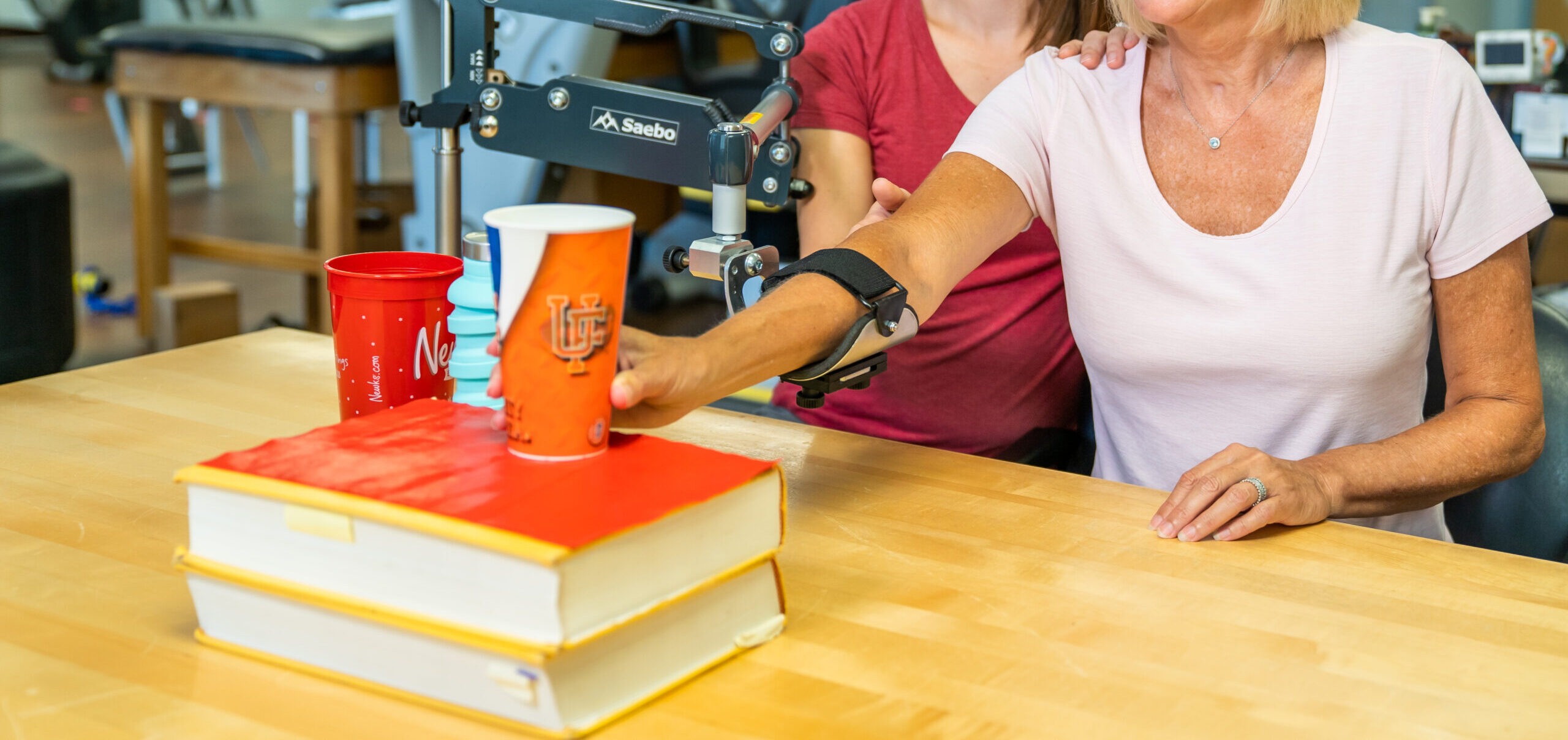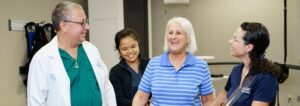Occupational Therapy Month: What do occupational therapists do?

Back to physical health resource hub
After any major health change, so many things change. Immediately, people go from being independent and able to take care of themselves and others to in some cases being unable to complete even the smallest activity, such as brushing their teeth. This is where occupational therapy comes in. Our job is to help people get back to independently doing things for themselves, primarily what are called activities of daily living (ADLs) and instrumental activities of daily living (IADLs). ADLs include getting dressed, brushing teeth, bathing, eating, and toileting. IADLs include a variety of activities, such as hobbies, cooking, cleaning, child and pet care, schoolwork, even sleep.
Occupational therapists work with patients in a multitude of ways, from helping strengthen their body and minds to be able to complete activities, (using electrical stimulation to help strengthen a hemiplegic arm) to teaching useful strategies to help them adjust and succeed in their current environment (using a sock aid to help put on socks or dressing strategies that only require the use of a single arm). Whatever the need, occupational therapy is there for you to help create a plan to help you succeed at your goals. The foundation of occupational therapy is based on the idea that by doing common tasks like dressing and brushing teeth is better for increasing motivation and functional ability following an injury or illness.
Here at Brooks, we strive to use the most evidence based treatments and assessments possible to get the best possible outcomes for our patients, including the use of the latest technology that combines exercise and functional activity. This leads me to one of my favorite parts about my job, which is watching people having massive recovery. To see the look on someone’s face the first time they do something as minor as putting on their shirt by themselves, or as large as moving their arm for the first time in 6 months, it always is something that makes my job worth it.
Frequently Asked Questions
Is occupational therapy and physical therapy the same thing?
No, but there are similarities and overlap between the professions! Both disciplines focus on evidence based, patient centered care to make the client as independent as possible. While physical therapy has a focus on mobility, occupational therapy has a focus on the activities of daily living mentioned above!
Is occupational therapy only in inpatient settings?
Occupational therapy is in a variety of different settings, such as outpatient and home health care, even telehealth. Additionally, occupational therapy plays a big role in pediatric settings, in outpatient, acute care, inpatient rehabilitation, and schools. Within occupational therapy, you can specialize in a variety of different types, such as neuro, ortho, cardiac, hand, mental health, or even ergonomics.
Does occupational therapy always consist of helping people get dressed or toileting?
Not always! ADL training is a big part of our job, which is why we do like sessions where we can help clients get dressed or toilet so we can practice for when they are going to discharge. However, it can also consist of standing activities, exercises, or strengthening. As long as the activity or exercise is to build up the ability to complete a functional activity, it is still within the scope of practice for occupational therapy.
Do you play a role in discharge?
Yes! We have a large role in discharge, and make sure that each client has the ability to succeed outside of therapy as well. We do things such as recommend and order equipment (shower chairs, 3 in 1 commodes), educate caregivers prior to discharge, and create home exercise plans that often include different ADL strategies.
What is your favorite thing about occupational therapy?
I love to watch the progression a person makes throughout therapy. Being able to see how someone can come in unable to move and leave able to take care of themselves is an amazing feeling, especially knowing you played a large part with the process. In occupational therapy, you get the ability to be truly creative in your treatments, and make them individual to each person so that they can have the best possible outcomes. As I said above, seeing that smile and pride on someone’s face after their first shower, moving their arm for the first time, or being able to cook a meal for loved ones by themselves makes me so happy. People get so much value from their independence, and I love that I get to help people gain back that independence during a tough time in their life.


